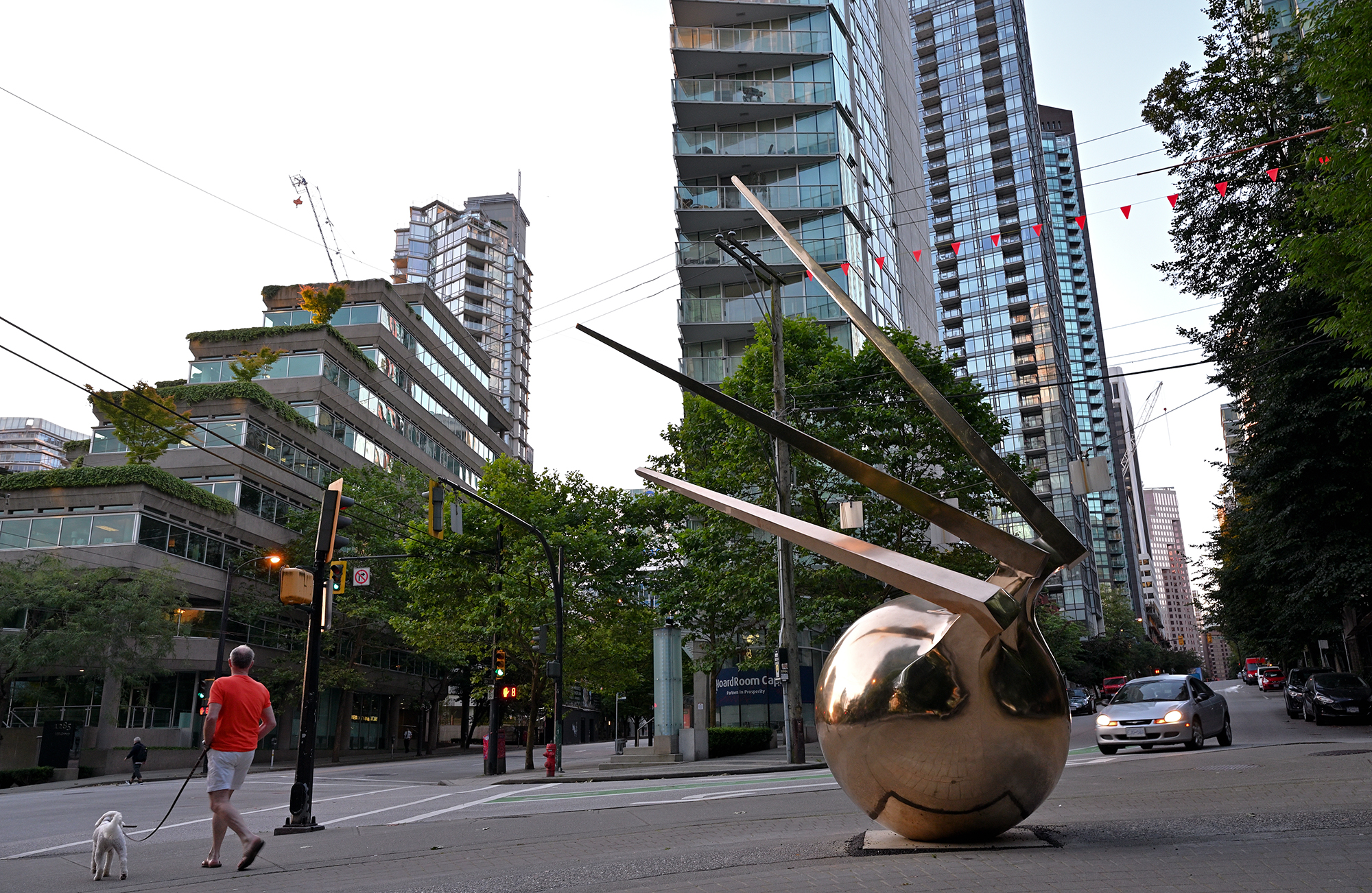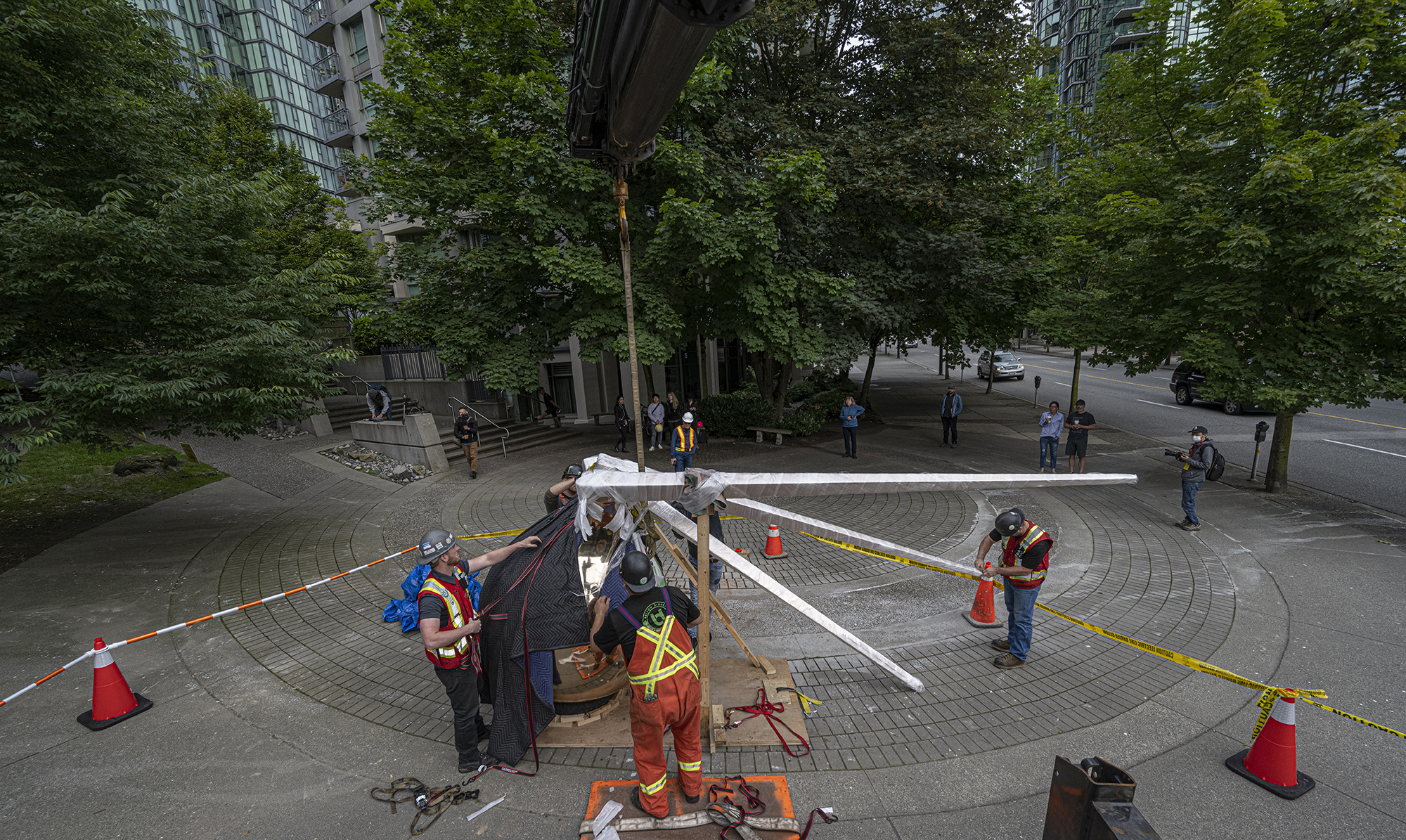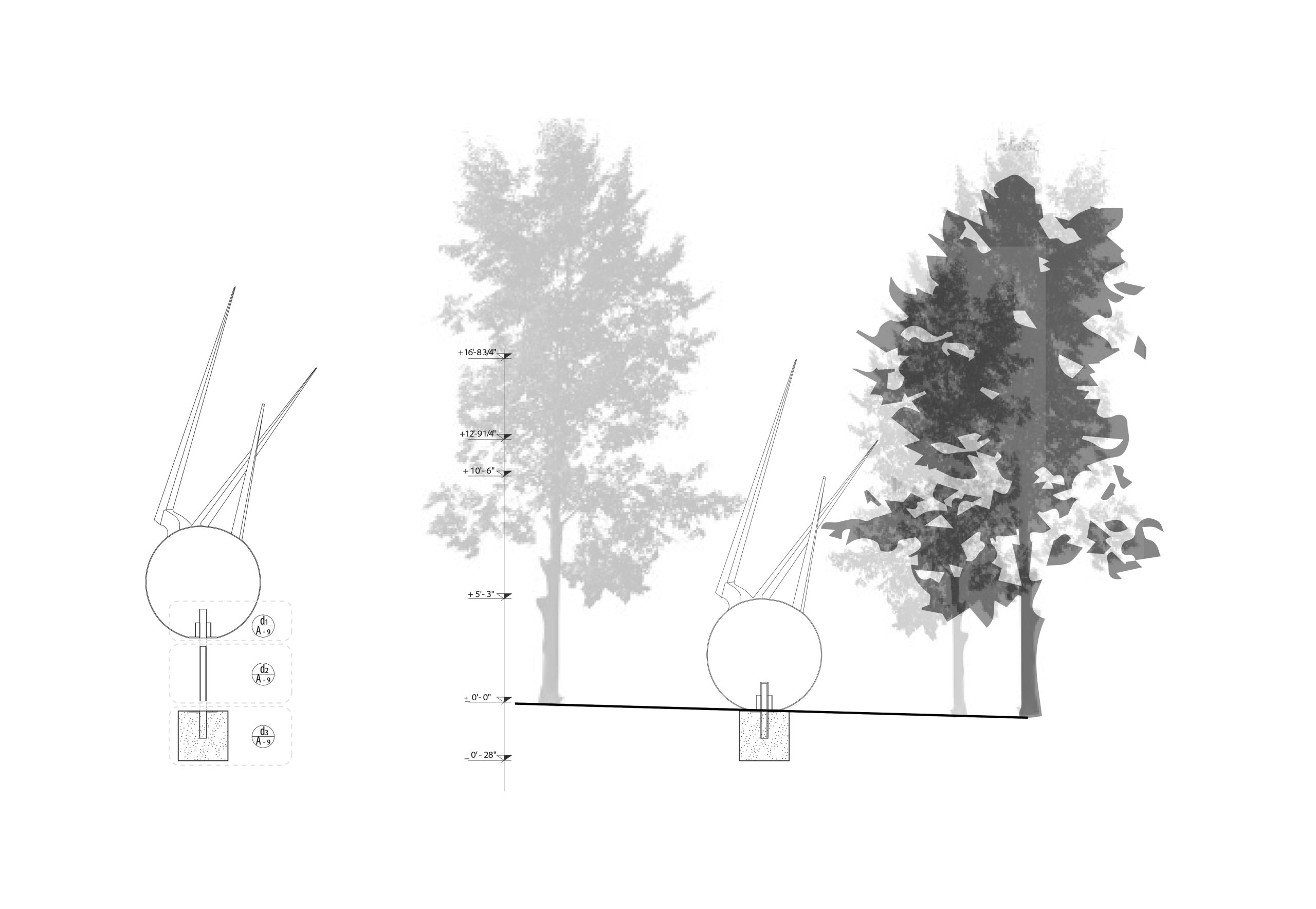Urban Sculpture > Need



The immigrant is in search of a place that, in many cases, is tied to his/her dreams. For me, the most important point of immigration is the possibility of movement from an imposed geography to a new land. To establish a life based on re-imagination: security, peace and stability. It is a place where one can combine what one already has with his/her wishes to reach an expected satisfaction. However, separation from one’s mother land to form a new history in unexplored territory is like a simultaneous experience of sweetness and bitterness.
All immigrants have real and imaginary stories about migration and their identity. These stories are sometimes told and other times, like my story, they are concealed to appear in the form of a sculpture. That is, the process of forming a sculpture, from idea to execution, becomes a media for revealing subjective conceptions (for myself) and others who observe it. It shows how this self-imposed challenge leads to the creation of a new work of art.
The idea for the first sculpture in Vancouver came to my mind in 2009 while I immigrated to Canada. I was in search of security and shelter, in the process of understanding this new culture and becoming more confident with my communication. With it revealed a bronze sculpture which I called “Need”. In fact, “Need”, for me, is the purest interpretation of the moods of that time. Even the passage of time could not have any impact on the quality of our relation. In a concise description: three abstract fingers are represented who demand something from their surrounding environment. They are like seedlings, sprouting out of soil or wood beams of a shelter that are resisting the ups and downs of life, but they still have desires. The palm of the hand, like a world of memories and experiences, locks up traces of the past in its soft body, like a fleshy spherical mirror that reflects what belongs to the present time.
“Need” – weighing 1200 kg and measuring 5 m tall – is made of 48 casted pieces, telling the untold and unknown desires of myself and other immigrants. I chose bronze as the material. It is a hard object with a soft, mirror-like appearance which can – for a moment – register and then turn back into its environment, such as what one sees in the juncture of Jervis, Melville and Pender streets. Exactly like having eye contact between a passersby, anybody – depending on one’s point of view – may experience the reflection of self in their surrounding environment.
In this way, “Need” was made for people who have experienced different histories, creating a concurrent private and public world in which time and place are not ignored but play a critical role together. In a private space, the sculpture reflects the unrecognizable, unsayable aspects of the observer’s subjectivity. The sculpture like a homogenous and reflective figure, inspiring a behavior that has a bodily dimension and is corelated to the observer’s experience from this self-reflection. In this case, the significance of this work is be dependent on the interaction between “Need” and the body of the observer. Its form is redefined with each encounter. But this interaction, through the presence of people, goes beyond the personal; any bodily gesture has the vision of the “other” in itself. Therefore the sculpture is always in dialogue with different bodies and simultaneously represents the concept of need, creating a ground in which all intervening, present factors (including the environment and others) interact with each other as a symbiotic body. The work of art would always feel the desire and presence of the “other.”